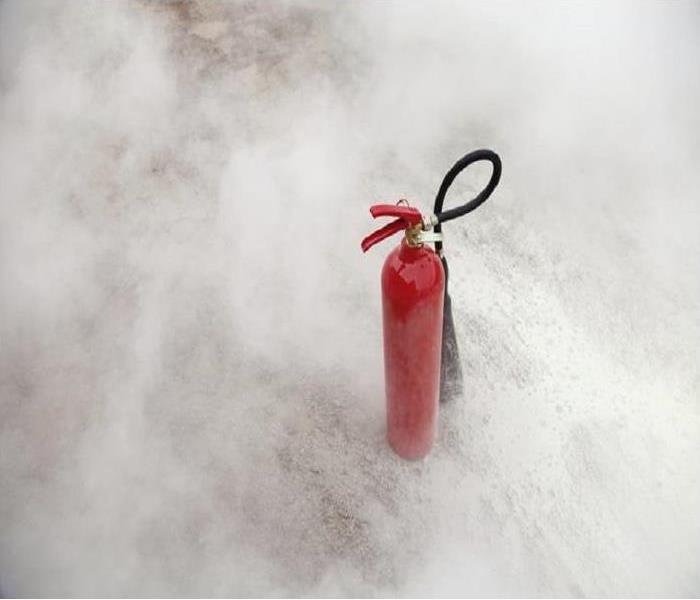You successfully put out a small fire and saved the day. Now what?
5/29/2018 (Permalink)
 Fire extinguishers can leave a huge mess. Make sure to clean up with the correct methods based on the type of extinguisher.
Fire extinguishers can leave a huge mess. Make sure to clean up with the correct methods based on the type of extinguisher.
How do you clean up the fire extinguisher discharge? What type of specialized equipment do you need? How long should you wait to clean it up? All of these are great questions to keep in mind, and the answers vary based on the type of extinguisher used. The following information provided by State Systems Inc can help know what steps to take next when dealing with the aftermath of a small fire.
*Normally the discharge from fire extinguishers does not present a danger or hazard to health. But it is essential to clean each type appropriately.
Fire Extinguisher Types and Cleaning Methods
Dry Chemical: Portable and compact, these extinguishers are well suited for minor incidents in commercial and industrial environments.
- Sweep or vacuum any residue that has settled on the affected area.
- Read the label of the extinguisher to determine the chemical used and then use the proper solution to neutralize it. Allow solutions to set for several minutes after applying before removal. (Note: there are multiple dry chemicals extinguisher types.)
- Wash the area with a mild soap and water solution; then rinse.
- Blow the area dry to remove excess water.
Wet Chemical: Uses a liquid agent to cool surfaces and reduce flames, commonly found in kitchens.
- Confirm all fuel sources to the equipment have been shut off.
- Make sure to wear rubber gloves. If the liquid or fire extinguishing agent comes into contact with your skin or eyes, flush thoroughly with water.
- Use hot, soapy water and a cloth or sponge to wipe away the foamy residue. Scrub all surfaces that have come into contact with the excess agent.
- Once all surfaces impacted by the residue are cleaned, rinse and allow time to dry before returning power back to the equipment.
Clean Agent: Discharge dissipates into the atmosphere making this extinguisher suitable for areas with sensitive equipment like a server room.
- Does not require special precautions to clean after use.
Class K: Capable of holding in steam and vapor, commonly found in commercial kitchen overhead extinguishers.
- Can be cleaned with soap and water
Always remember to replace or recharge your extinguisher after each use. For more information review State Systems Inc FAQs or contact your local fire department.






 24/7 Emergency Service
24/7 Emergency Service